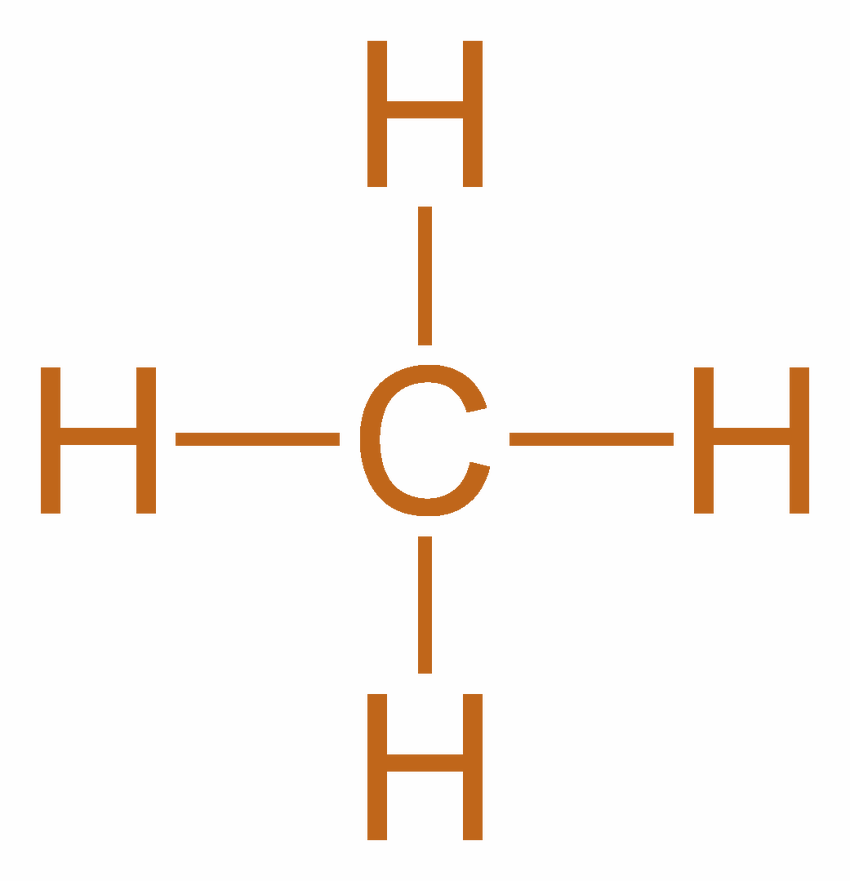
Which of the following methods can be used for the preparation of methane?
A)Wurtz reaction
B)Kolbe’s reaction
C)Reduction of alkyl halide
D)Hydrogenation of alkene
Answer
218.7k+ views
Hint: Methane is one of the simplest saturated hydrocarbons with chemical formula $C{H_4}$ .It basically consists of four hydrogen atoms and one carbon atom and it is the simplest alkane. It is a colorless and odorless gas.
Complete step by step answer:
Methane is a flammable non-toxic gas. It is a tetrahedral molecule which has four equivalent \[C - H\] bonds. This gas was introduced in the year 1776 by an Italian physicist Alessandro Volta. Moreover, it is one of the most important greenhouse gases and approximately $70\% $ of the methane emissions are linked to human activities. The structure of methane is as shown:

Further, methane on combustion gives carbon dioxide, water, heat and light. Basically the oxygen will combine with the carbon and hydrogen in the methane molecule to produce carbon dioxide and water. The reaction is as shown:
$C{H_4}(g) + 2{O_2}(g) \to C{O_2}(g) + 2{H_2}O$ + heat+ light
Now, among the given options, reduction of alkyl halides can be used for the preparation of methane whereas all other methods are used to prepare ethane as the smallest hydrocarbon. Basically, alkyl halides on reduction with nascent hydrogen form alkanes. The preparation of methane by the reduction of alkyl halide is given as:
$C{H_3} - Cl\xrightarrow[{{H^ + }}]{{Zn}}C{H_4}$
Hence, option C is correct.
Note:Methane alone is non-toxic but can become deadly when mixed with other gases. It is basically released during coal, natural gas and oil production and transportation. Moreover, it is used in automobiles, ovens and in water heaters as a fuel. It is also used in the generation of electricity and in gas cookers.
Complete step by step answer:
Methane is a flammable non-toxic gas. It is a tetrahedral molecule which has four equivalent \[C - H\] bonds. This gas was introduced in the year 1776 by an Italian physicist Alessandro Volta. Moreover, it is one of the most important greenhouse gases and approximately $70\% $ of the methane emissions are linked to human activities. The structure of methane is as shown:

Further, methane on combustion gives carbon dioxide, water, heat and light. Basically the oxygen will combine with the carbon and hydrogen in the methane molecule to produce carbon dioxide and water. The reaction is as shown:
$C{H_4}(g) + 2{O_2}(g) \to C{O_2}(g) + 2{H_2}O$ + heat+ light
Now, among the given options, reduction of alkyl halides can be used for the preparation of methane whereas all other methods are used to prepare ethane as the smallest hydrocarbon. Basically, alkyl halides on reduction with nascent hydrogen form alkanes. The preparation of methane by the reduction of alkyl halide is given as:
$C{H_3} - Cl\xrightarrow[{{H^ + }}]{{Zn}}C{H_4}$
Hence, option C is correct.
Note:Methane alone is non-toxic but can become deadly when mixed with other gases. It is basically released during coal, natural gas and oil production and transportation. Moreover, it is used in automobiles, ovens and in water heaters as a fuel. It is also used in the generation of electricity and in gas cookers.
Recently Updated Pages
The hybridization and shape of NH2 ion are a sp2 and class 11 chemistry JEE_Main

What is the pH of 001 M solution of HCl a 1 b 10 c class 11 chemistry JEE_Main

Aromatization of nhexane gives A Benzene B Toluene class 11 chemistry JEE_Main

Show how you will synthesise i 1Phenylethanol from class 11 chemistry JEE_Main

The enolic form of acetone contains a 10sigma bonds class 11 chemistry JEE_Main

Which of the following Compounds does not exhibit tautomerism class 11 chemistry JEE_Main

Trending doubts
JEE Main 2026: Application Form Open, Exam Dates, Syllabus, Eligibility & Question Papers

Derivation of Equation of Trajectory Explained for Students

Hybridisation in Chemistry – Concept, Types & Applications

Understanding the Angle of Deviation in a Prism

Understanding Collisions: Types and Examples for Students

Understanding Atomic Structure for Beginners

Other Pages
NCERT Solutions For Class 11 Chemistry Chapter 7 Redox Reaction

JEE Advanced Marks vs Ranks 2025: Understanding Category-wise Qualifying Marks and Previous Year Cut-offs

Thermodynamics Class 11 Chemistry Chapter 5 CBSE Notes - 2025-26

NCERT Solutions ForClass 11 Chemistry Chapter Chapter 5 Thermodynamics

Equilibrium Class 11 Chemistry Chapter 6 CBSE Notes - 2025-26

How to Convert a Galvanometer into an Ammeter or Voltmeter




